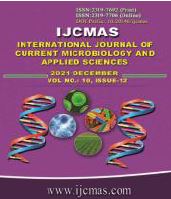


 National Academy of Agricultural Sciences (NAAS)
National Academy of Agricultural Sciences (NAAS)

|
PRINT ISSN : 2319-7692
Online ISSN : 2319-7706 Issues : 12 per year Publisher : Excellent Publishers Email : editorijcmas@gmail.com / submit@ijcmas.com Editor-in-chief: Dr.M.Prakash Index Copernicus ICV 2018: 95.39 NAAS RATING 2020: 5.38 |
When considering food stability the microbial, chemical and sensory qualities must taking into consideration. To achieve these, appropriate preservation measures must be taken to the level that the activities of microorganisms will be overcome. The microbial stability and safety of the most traditional and processed foods is based on a combination of several preservation factors (called hurdles), which the microorganisms present in food are unable to overcome. Hurdles use in food can be physical, physicochemical or microbiologically derived. The main objective of hurdle technology is food preservation, but in addition, many hurdles were reported to improve sensory attributes. Many findings revealed that combination of preservatives at lower concentrations discourage microbial activities more than single preservative at higher concentration. In this review general introduction of hurdle technology was given, also basis on food spoilage and preservation. Principles, application, advantages and effects of hurdles on food quality were also reviewed. Hurdles classification with examples was also stated. Special emphasis was given to contributions from other researchers on the application and effectiveness of hurdle technology in maintaining microbiological, chemical, sensory and physical qualities of processed foods.
 |
 |
 |
 |
 |